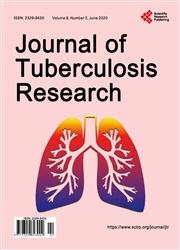联合抗逆转录病毒治疗成人结核发病时间的竞争风险模型
引用次数: 0
摘要
本研究的目的是确定在存在竞争风险的情况下影响结核病发展时间的因素。在这种情况下,在发生结核病之前死亡被认为是一种竞争风险,因为它改变了从基线到结核病发生的时间。我们使用的数据来自一项名为“Tshepo”的随机纵向临床试验研究。“Tshepo”研究是一项为期3年的随机临床研究,研究对象是来自博茨瓦纳的650名ART-naïve成年人(69.4%为女性),他们接受了基于nnrti的一线ART治疗。参与者以相同的比例(以开放标签、非盲法的方式)分配到6个初始治疗组中的一个,以及使用排列块随机化的两个依从组中的一个。根据CD4+细胞计数(小于200个细胞/mm 3, 201 - 350个细胞/mm 3)和参与者是否有依从性助手进行分层。使用Kaplan-Meier方法和标准Cox比例风险回归等经典方法来分析生存数据,忽略了在存在竞争风险的情况下可能不合适的竞争事件。这个想法是使用相互竞争的风险模型来调查不同的治疗方案如何影响结核病的发展时间,并将结果与使用传统的生存率CD4、血红蛋白和性别获得的结果进行比较。同样的,占竞争风险的风险比治疗后大约是1.89加元暗示患结核病的风险在服用治疗C高出约89%相比服用治疗a .从结果从而得出标准Cox模型的时间事件数据的竞争风险低估了风险比率因此当处理数据与多个故障事件占竞争是很重要的事件。本文章由计算机程序翻译,如有差异,请以英文原文为准。
Competing Risk Model for Time to Development of Tuberculosis among Adults on Combination Antiretroviral Treatment
The purpose of this study was to identify factors affecting the time to development of tuberculosis in the presence of competing risks. In this case death before developing tuberculosis was deemed a competing risk because it al-tered the occurrence of the outcome of interest being time to development of tuberculosis from baseline. We used data from a randomized longitudinal clinical trial study called the “Tshepo” study. The “Tshepo” study was a 3-year randomized clinical study following 650 ART-naïve adults (69.4% female) from Botswana who initiated first-line NNRTI-based ART. Participants were assigned in equal proportions (in an open-label, unblinded fashion) to one of 6 initial treatment arms and one of two adherence arms using permuted block randomization. Randomization was stratified by CD4+ cell count (less than 200 cells/mm 3 , 201 - 350 cells/mm 3 ) and by whether the participants had an adherence assistant. Classical methods such as the Kaplan-Meier method and standard Cox proportional hazards regression were used to analyze survival data ignoring the competing event(s) which may have been in-appropriate in the presence of competing risks. The idea was to use competing risk models to investigate how different treatment regimens affect the time to the development of TB and compare the results to those obtained using the classical survival CD4, Hemoglobin and gender. Similarly, after accounting for competing risks the hazard ratio for treatment C was about 1.89 implying that the risk of developing TB amongst those taking treatment C was about 89% higher as compared to those taking treatment A. From the obtained results it was thus concluded that the standard Cox model of time to event data in the presence of competing risks underestimated the hazard ratios hence when dealing with data with multiple failure events it is important to account for competing events.
求助全文
通过发布文献求助,成功后即可免费获取论文全文。
去求助

 求助内容:
求助内容: 应助结果提醒方式:
应助结果提醒方式:


